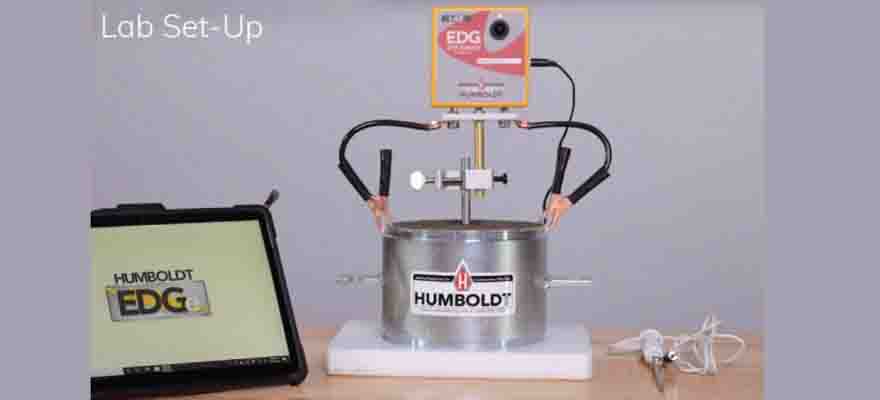Field Testing Equipment vs. Lab Testing Equipment: Key Differences
In the world of civil engineering, infrastructure development, and material science, testing equipment plays a critical role in ensuring safety, compliance, and quality. However, a key decision professionals must make is whether to use field testing equipment or lab testing equipment—or a combination of both. While each serves a specific purpose, understanding their key differences can help teams make smarter, more efficient testing strategies for their projects.
This article explores the primary differences between field and lab testing equipment, including use cases, advantages, limitations, and examples, highlighting when and why one may be more appropriate than the other.
What is Field Testing Equipment?
Field testing equipment is designed for on-site analysis. These tools are portable, rugged, and meant to deliver quick, reliable results in real-world conditions. They’re ideal when engineers need immediate feedback on construction materials, ground conditions, or structural performance.
For instance, tools like the Rebound Hammer are used directly on concrete structures to measure surface hardness, offering insights into compressive strength without needing lab extraction.
Other examples of field testing tools include:
- GPR Survey devices for underground scanning
- Rock Point Load Test tools for rock strength in mines or slopes
- Vibration Monitoring Equipment for assessing structural movement in bridges and high-rises
What is Lab Testing Equipment?
Lab testing equipment is used in controlled environments, offering high precision and standardization. These tests are often more detailed and follow strict protocols, making them essential for material characterization, certification, and quality control.
For example, a Blaine Air Permeability apparatus is used in labs to determine the fineness of cement. The controlled conditions allow for consistency, making lab tests more suitable for compliance documentation and R&D.
Other examples include:
- Universal testing machines for tensile and compressive strength
- Thermal chambers for temperature-resistance analysis
- Chemical durability tests like the Rapid Chloride Test
Key Differences Between Field and Lab Testing Equipment
| Criteria | Field Testing Equipment | Lab Testing Equipment |
|---|---|---|
| Location | On-site (field, construction zone) | Laboratory settings |
| Portability | Highly portable and compact | Usually stationary and bulky |
| Speed | Fast, real-time results | Slower but more accurate |
| Accuracy | Sufficient for on-site decisions | High precision for compliance |
| Environment | Exposed to weather, terrain, noise | Controlled and stable conditions |
| Usage | Immediate evaluations and monitoring | In-depth analysis and research |
| Cost | Generally more affordable | Higher investment and operational costs |
When to Use Field Testing Equipment
Field testing is indispensable during early assessments, on-site inspections, or when urgent decisions must be made. For instance, contractors checking the stability of newly laid asphalt will often use Marshall Stability Equipment to verify compaction and mix performance without waiting for lab results.
Likewise, construction companies building highways often rely on Rock Testing Equipment and point load testers to quickly assess the bearing capacity of rock strata. These results guide the excavation or foundation design process in real-time.
Field tests are also useful for:
- Site feasibility studies
- Equipment calibration checks
- Maintenance diagnostics
- Emergency testing scenarios
When to Use Lab Testing Equipment
Lab testing becomes crucial when higher accuracy, repeatability, and adherence to standards are required. For example, if the chloride ion penetration resistance of concrete in a coastal bridge needs to be certified, a Rapid Chloride Test performed under lab conditions ensures data validity.
Another case is the use of Geotechnical Modeling Software that relies on precise input parameters obtained from laboratory triaxial or consolidation tests. These results are essential for simulating slope stability, settlement, or load-bearing analysis.
Laboratory testing is ideal for:
- Conformance with IS/ASTM standards
- Research and development
- Government and regulatory certifications
- Material innovation and quality audits
Hybrid Approach: The Best of Both Worlds
In modern construction and infrastructure projects, professionals often adopt a hybrid testing strategy—using both field and lab equipment for comprehensive analysis.
For instance:
- Start with on-site strength tests using a Rebound Hammer
- Confirm data in the lab with a cube compressive strength test
- Use field sensors to monitor ongoing changes through Vibration Monitoring Equipment
- Simulate future risks using data-integrated geotechnical modeling tools
This synergy ensures immediate response on-site while maintaining the accuracy and traceability required for compliance and long-term planning.
Final Thoughts
Both field testing equipment and lab testing equipment serve critical roles in the life cycle of a construction or infrastructure project. While field tools offer mobility, speed, and practicality, lab equipment provides precision, reliability, and compliance.
Choosing between the two—or combining them—depends on the nature of your project, the phase you’re in, and the level of accuracy required. Whether you’re sourcing advanced testing tools, conducting a GPR Survey, or working with W Beam Crash Barrier Suppliers for quality assurance, having the right testing setup is essential.
For a well-rounded and future-ready approach, companies like Avantech provide both field and lab solutions—enabling engineers to build smarter, safer, and more efficient structures with confidence.






